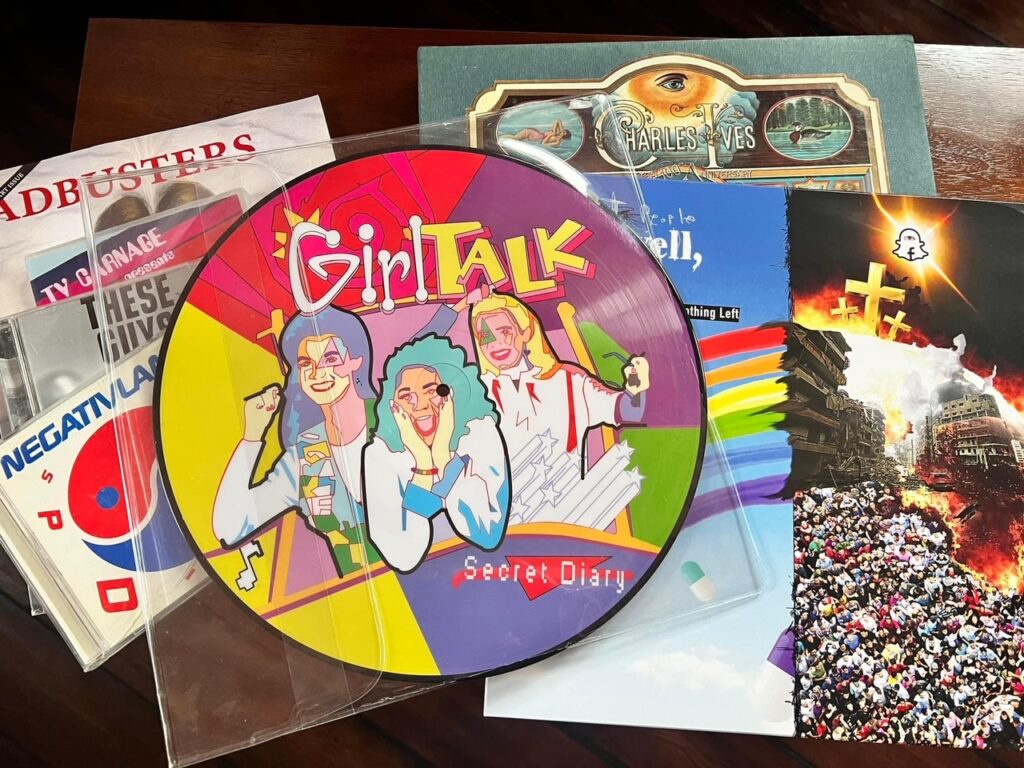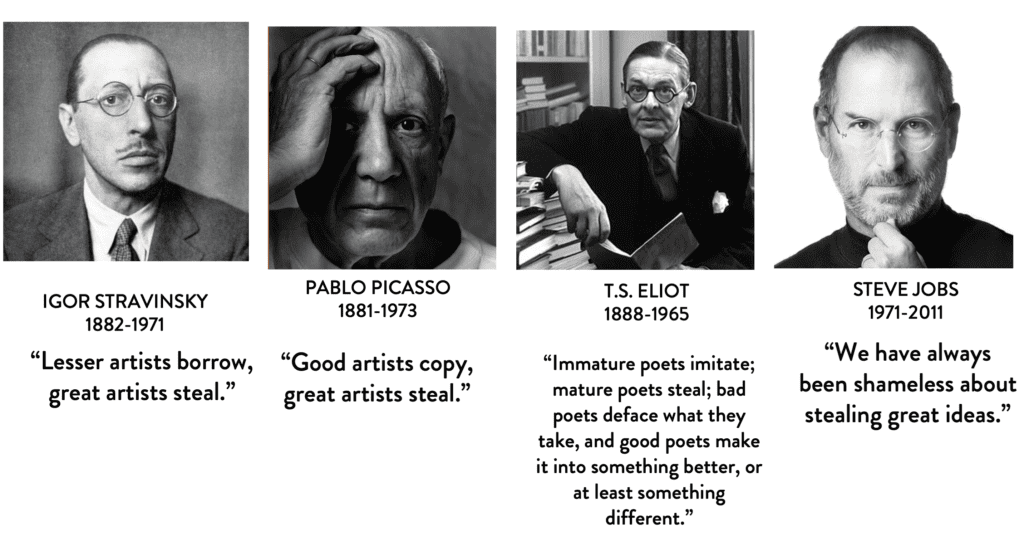Transformative Arts
Is creativity contagious?
In response to German philosopher Walter Benjamin’s The Arcades Project, Kenneth Goldsmith raises “many questions about the nature of authorship and ways of constructing literature: isn’t all cultural material shared, with new works built upon preexisting ones, whether acknowledged or not? Haven’t writers been appropriating from time eternal? What about those well-digested strategies of collage and pastiche? Hasn’t it all been done before? And, if so, is it necessary to do it again? What is the difference between appropriation and collage?” (Uncreative Writing, p. 110)

For this lesson, I begin by challenging my students with these questions:
- Do you believe it’s morally suspicious to use another’s art to create a new work?
- What are some art forms that use others’ work to create new, transformative art?
After discussion, we look at many varied examples of works that have imitated or been inspired by another work, ultimately leading to a new, transformed artifact. We discuss many historically well-known artists that have openly suggested stealing great art (see below).

We then discuss how we can responsibly remix, imitate, collage, and transform existing creative works into something new and transformative. We view many samples of collaged art, found poetry, and even modern revisions of classic works (Maria Dahvana Headley’s Beowulf). We also discuss when and how to properly attribute and cite.
At the conclusion of this lesson, students are challenged with finding a poem of choice and imitating a portion of the work while also transforming it with their own original voice and intent. This is a great lesson at the beginning of a semester because students are encouraged to go explore and interrogate many works and they don’t feel the overwhelming pressure of creating something ‘from scratch’.